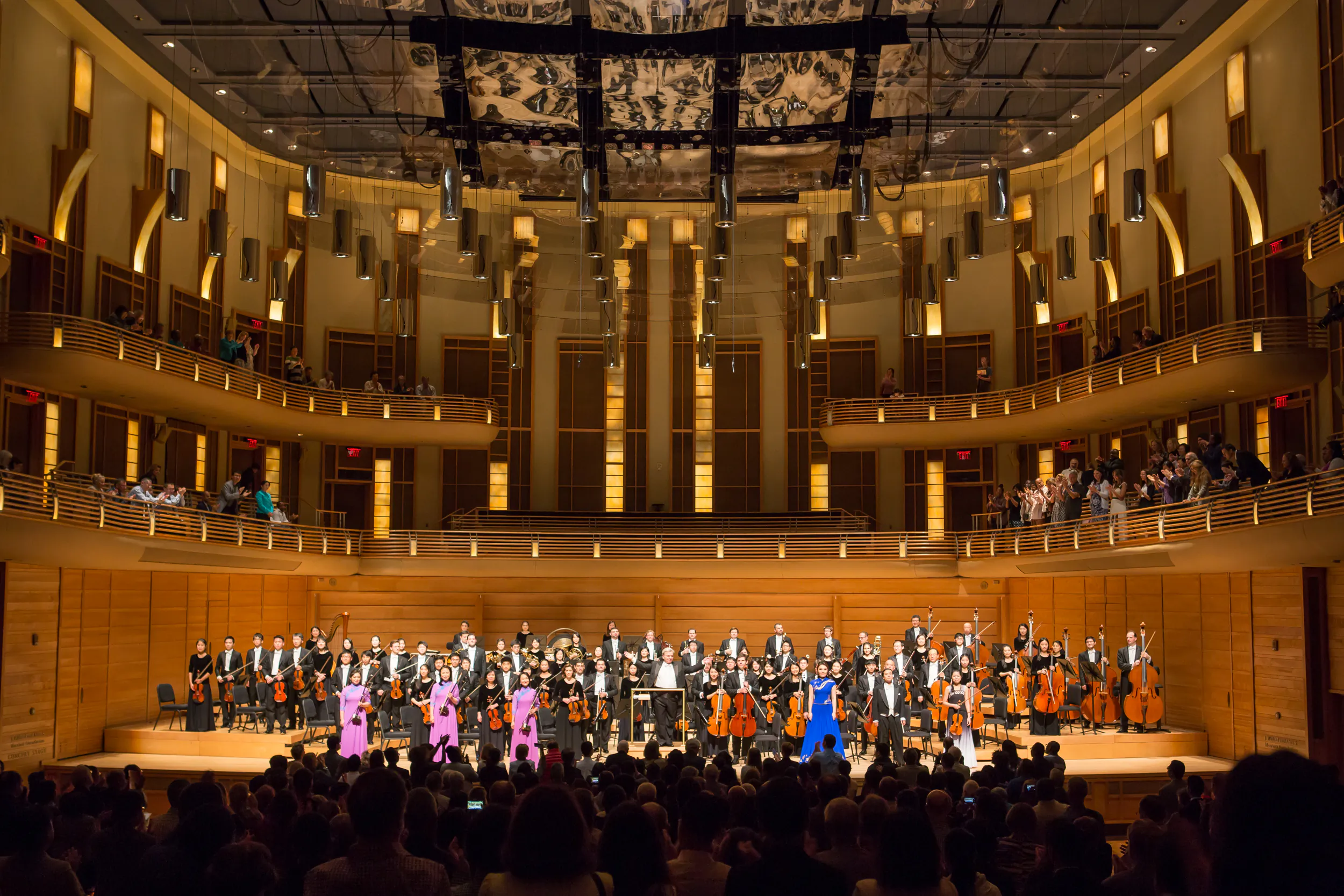After a hiatus lengthened by the COVID-19 pandemic, Shen Yun Symphony Orchestra (SYSO) is returning to New York for only two performances at Lincoln Center, on Sunday, Oct. 22.
The ensemble was formed out of popular demand, and has received standing ovations at sold-out performances around the globe.
This year, SYSO will perform original works in its signature, unique style that blends ancient Chinese instruments with a full, 100-piece symphony orchestra, as well as several classical favorites that highlight the universality of music.
Sibelius’s “Finlandia,” Dvorak’s “New World” Symphony, and the 20th-century “Butterfly Lovers Violin Concerto,” are all compositions that sought to capture the authentic voice of a nation, and upon their premieres, were popularized around the world.
Shen Yun’s original works may evoke similar feelings: composed to capture the authentic Chinese culture, the divinely inspired culture that thrived for 5,000 years before communism, these works have been universally beloved by audiences around the globe.
“The music itself has an individual character you don’t quite find in Western music,” said Robert Vogt, board member of the Boston Symphony Orchestra, after seeing a past performance. “Whoever puts it all together is a genius.”
Innovation
Shen Yun seems to have both practical and noble reasons for combining the musical traditions of the East and West.
According to Shen Yun’s own literature, the artists seek to revive traditional culture; artists of the past saw the classical arts as a way of honoring the divine, and these artists today believe much the same. Both classical Western and Chinese music are meaningful traditions the artists seek to preserve; with the annual Shen Yun performances also generally including authentic bel canto performances.
But the use of Western orchestration also solves a key issue and enables the company to share the music of ancient China through grand stage performances.
“In ancient China, music was almost always played with just one or a few instruments, and generally speaking, most traditional musical works are monophonic,” explained conductor Ying Chen in an explainer video on the new streaming platform Shen Yun Creations.
This means the music usually had only a single melodic line and was not arranged to utilize harmony, chords, and counterpoint. If Shen Yun were to only use Chinese instruments, the music would lose out on the depth and harmony that listeners are so used to.
“As we know, the word philharmonic means love or harmony, and we wouldn’t want that to go missing,” Ms. Chen said.
“By incorporating Western instrumentation, we are able to support wonderful, authentic Asian melodies with rich harmonies and an intricate web of sound and rhythm, and that comes in especially useful when we need to depict grand historical scenes like imperial processions or heroic battles.
Shen Yun’s compositions are generally written to accompany the dance performances, which number over a dozen each season. These dances tell the stories of legendary heroes and emperors, the rise and fall of different dynasties, epic myths, and the peoples that inhabit China from the silver-adorned Hmong, the colorful Yi, and hospitable Mongolians.
To do this, Shen Yun employs a few key Chinese instruments like the erhu and pipa. You can listen to introductions of the instruments in the videos below:
Both of these are period instruments, and thousands of years old.
“You’ll probably agree that their sounds are impossible to reproduce exactly with another instrument,” Ms. Chen said.
To properly combine the nuanced pipa and erhu with an orchestra requires careful planning on the composers’ and arrangers’ parts, and a good ear and deep knowledge of the musicians’ parts.
“To combine the sounds and perfectly match the intonations of both musical traditions often requires a higher level of skill,” Ms. Chen explained, describing it as a “delicate recipe” requiring perfect balance.
This is in part because the scales used in the Chinese melodies are not something you would have practiced in any conservatory, she said, plus a lot of notes and expressions used in Chinese melodies are in between the notes on a Western instrument—a note that would lay between a black and white key on a piano.
“What we’ve done is … what we like to call the perfect harmony of East and West,” Ms. Chen said.
The effect has been lauded by accomplished musicians and new concertgoers alike.
“I am completely enchanted,” said Her Royal Highness Princess Michael of Kent after watching her perform at the London Coliseum. “I do hope there is a recording of your wonderful erhu player.”
John Vishneski, a conductor and clarinet player, had attended a Chicago performance and concluded it was “magnificent.”
“It moved me … there was power, there was beauty. It was like poetry, but with instruments,” he said.
From The Epoch Times
